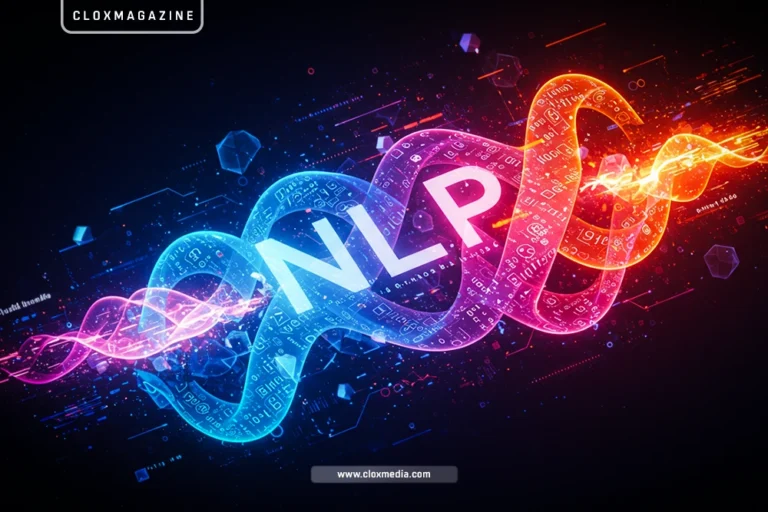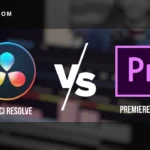Our Recent research has transformed how we approach AI model customization, revealing critical insights into when to fine-tune large language models versus leveraging in-context learning. These findings have significant implications for developers, businesses, and researchers looking to deploy AI solutions efficiently. The right approach can dramatically impact both performance and resource allocation – choosing incorrectly could mean wasted computing power or suboptimal results.
NOTE: This is an official Research Paper by “CLOXLABS“
Understanding the Foundation of Large Language Models
Before diving into customization methods, we need to grasp what makes large language models tick. These sophisticated AI systems have been trained on vast amounts of text data, absorbing patterns, facts, and linguistic structures from billions of examples across the internet. Think of them as having gone through an intensive education process, building a generalized understanding of language and knowledge.
However, this generalized training alone isn’t enough for specialized tasks. Just as a medical graduate needs residency training to become a specialist, LLMs need customization to excel at specific applications. This is where the critical choice between fine-tuning and in-context learning comes into play.
How LLMs Acquire Knowledge
Large language models primarily acquire factual knowledge during their pre-training phase – the initial training on massive datasets. This forms the foundation of what the model “knows.” Interestingly, recent research indicates that LLMs struggle to acquire entirely new factual knowledge through subsequent fine-tuning.
When we try to teach these models new facts during fine-tuning, they learn these examples significantly slower than information that aligns with their pre-existing knowledge. This suggests that fine-tuning is better at teaching models to use their existing knowledge more efficiently rather than teaching them brand new information.
Fine-Tuning: Rewiring the AI’s Neural Pathways
Fine-tuning is essentially a process of additional training that adjusts the model’s internal parameters to optimize for specific tasks. Imagine teaching a seasoned chef who knows general cooking principles how to specialize in French cuisine – you’re building on existing knowledge while steering toward specialization.
… All ADS on this platform are served by GOOGLE …
How Fine-Tuning Works
When we fine-tune an LLM, we expose it to a carefully curated dataset related to our target application. The model then adjusts its internal weights and biases – the mathematical values that determine how it processes information – to better handle this specific domain or task.
This process requires computational resources, specialized knowledge, and time. However, the resulting model can perform its specialized task more efficiently since the optimization is “baked in” to its architecture.
The Hallucination Challenge
Recent research has uncovered a concerning pattern: fine-tuning LLMs on new knowledge can actually increase their tendency to hallucinate; to generate plausible-sounding but factually incorrect responses.
Researchers found that as models gradually learn new information through fine-tuning, this correlates with a linear increase in hallucinations. This presents a critical trade-off: we gain specialization but potentially at the cost of factual reliability.
“The results highlight the risk in introducing new factual knowledge through fine-tuning,” note the researchers, adding that LLMs “mostly acquire factual knowledge through pre-training, whereas fine-tuning teaches them to use it more efficiently.
In-Context Learning: Teaching in Real-Time
In-context learning represents a fundamentally different approach to model customization. Rather than permanently altering the model’s parameters, we provide examples or instructions within the input prompt itself. This is like giving a map and directions to a traveler rather than rewiring their brain to know a specific route.
… All ADS on this platform are served by GOOGLE …
How In-Context Learning Works
When using in-context learning, we include demonstrations of the task directly in the prompt. For example, if we want the model to classify customer feedback as positive or negative, we might include several examples of correctly classified feedback before asking it to classify a new example.
This approach requires no additional training and preserves the model’s general capabilities while steering its behavior toward our specific application.
The Recommendation Behavior Breakthrough
A fascinating study published in April 2025 explores why providing just a few demonstrations without model fine-tuning can lead to better performance in recommendation systems compared to zero-shot approaches.
The researchers proposed a theoretical model called LLM-ICL Recommendation Equivalent Gradient Descent model (LRGD), which connects recommendation generation with gradient descent dynamics. Their findings suggest that the in-context learning inference process in LLMs aligns with the training procedure of its dual model, producing token predictions equivalent to the dual model’s testing outputs.
This breakthrough helps explain the seemingly magical ability of LLMs to adapt to new tasks without parameter updates, offering valuable insights for optimizing in-context learning approaches.
Choosing the Right Approach: A Practical Framework
The decision between fine-tuning and in-context learning isn’t always straightforward. Each approach has distinct advantages that make it suitable for different scenarios. Here’s how to think about this crucial choice:
When to Consider Fine-Tuning
Fine-tuning generally makes sense when:
- Your task requires deep specialization in a particular domain
- You need consistent, repeatable performance across many similar inputs
- You have access to substantial computational resources
- You possess a high-quality dataset specific to your task
- The task builds on knowledge the model already possesses rather than introducing entirely new facts
For instance, if you’re building a medical diagnostics assistant that needs to consistently follow specific protocols, fine-tuning might be the better approach despite the increased resource requirements.
When to Consider In-Context Learning
In-context learning shines when:
- You need flexibility to quickly adapt to various related tasks
- Computational resources are limited
- Your use cases are diverse or frequently changing
- You want to preserve the model’s general capabilities
- You need to minimize the risk of introducing new hallucinations
If you’re developing a versatile customer service assistant that handles a wide range of inquiries across multiple departments, in-context learning might provide the adaptability you need without sacrificing performance.
To better understand these approaches in practice, let’s examine how they’re being implemented in real-world scenarios.
Fine-Tuning Success: Domain-Specific Expertise
Consider a financial services company that fine-tuned an LLM on thousands of financial regulations, internal policies, and client interactions. The resulting model provides highly accurate compliance guidance to advisors. Since the knowledge domain is well-established and the use case specific, fine-tuning delivers consistent, reliable results.
The key to their success was ensuring the fine-tuning dataset contained information already aligned with the model’s pre-existing knowledge, primarily focusing on teaching it to retrieve and apply this knowledge more effectively rather than introducing entirely new concepts.
In-Context Learning Victory: Adaptive Customer Support
A retail company implemented an LLM-powered customer service system that handles everything from product recommendations to return policies. Rather than creating multiple fine-tuned models, they used in-context learning with carefully crafted examples for different scenarios.
This approach allowed their system to switch between tasks seamlessly, recommending products one moment and explaining warranty policies the next, all without changing the underlying model. The flexibility proved invaluable during seasonal changes when customer inquiries shifted dramatically.
Future Directions in LLM Customization
As research continues to evolve, we’re seeing interesting hybrid approaches emerging that combine the strengths of both methods:
Retrieval-Augmented Generation
This approach pairs in-context learning with external knowledge retrieval systems, allowing models to access up-to-date information without retraining or fine-tuning. This addresses one of the key limitations of LLMs; their knowledge cutoff date; while maintaining the flexibility of in-context learning.
Parameter-Efficient Fine-Tuning
Techniques like LoRA (Low-Rank Adaptation) and adapter modules allow for specialized fine-tuning without modifying most of the model’s parameters. This provides many benefits of fine-tuning at a fraction of the computational cost, potentially offering a middle ground between our two approaches.
Practical Implementation Guide
If you’re looking to implement either approach, consider these best practices:
For Fine-Tuning:
- Start with a strong evaluation framework to measure success
- Use high-quality, well-validated training data that aligns with the model’s existing knowledge
- Implement robust monitoring for hallucinations, especially if introducing new knowledge
- Consider regularization techniques to prevent overfitting to the fine-tuning data
- Test extensively before deployment to ensure reliability
For In-Context Learning:
- Craft clear, representative examples that demonstrate the exact behavior you want
- Experiment with different prompt structures to find optimal performance
- Establish a library of proven prompts for different scenarios
- Implement fallback mechanisms for edge cases
- Regularly review and update your examples as needs evolve
Conclusion: The Complementary Nature of Customization Approaches
The research on fine-tuning versus in-context learning reveals that these approaches aren’t competing alternatives but complementary tools in our AI customization toolkit. Understanding their strengths, limitations, and appropriate applications is crucial for anyone working with language models.
Fine-tuning excels at optimizing models for consistent performance on specific tasks by teaching them to better utilize their existing knowledge. In-context learning offers flexibility and adaptation without parameter changes, making it ideal for dynamic environments or resource-constrained settings.
The most sophisticated AI implementations will likely leverage both approaches strategically – fine-tuning for core, stable functionalities and in-context learning for adaptability and edge cases. As research continues to evolve, we’ll undoubtedly discover even more nuanced ways to customize these powerful AI systems for real-world applications.
By making informed choices about customization approaches, developers and organizations can unlock the full potential of large language models while mitigating their limitations – bringing us closer to truly useful, reliable AI assistants across countless domains.
CLOXMAGAZINE, founded by CLOXMEDIA in the UK in 2022, is dedicated to empowering tech developers through comprehensive coverage of technology and AI. It delivers authoritative news, industry analysis, and practical insights on emerging tools, trends, and breakthroughs, keeping its readers at the forefront of innovation.









